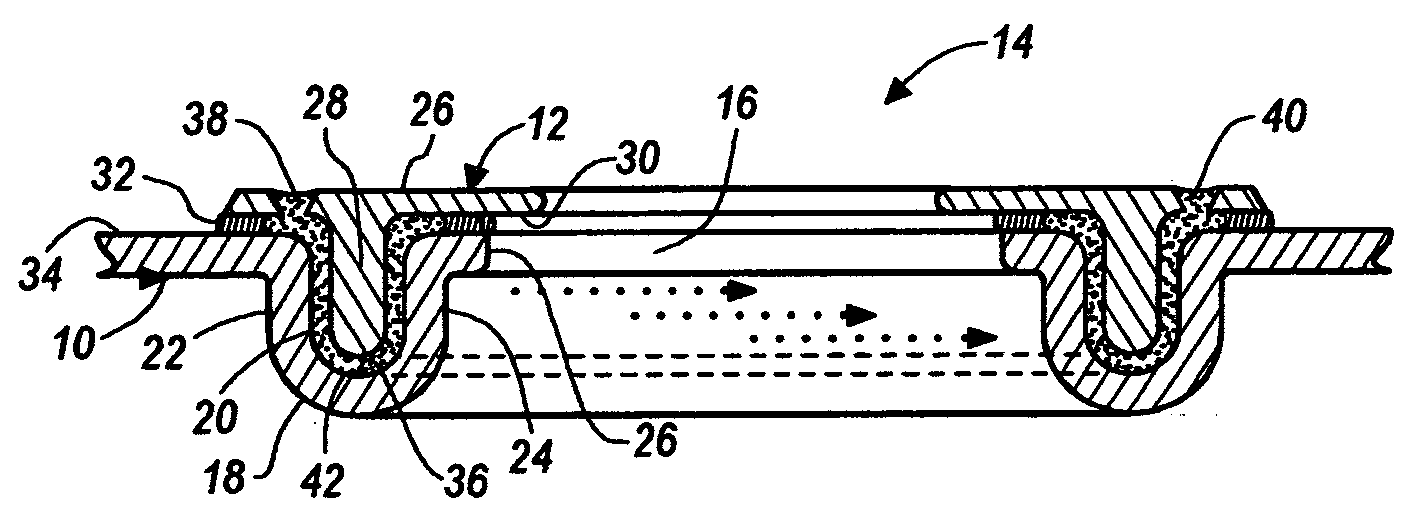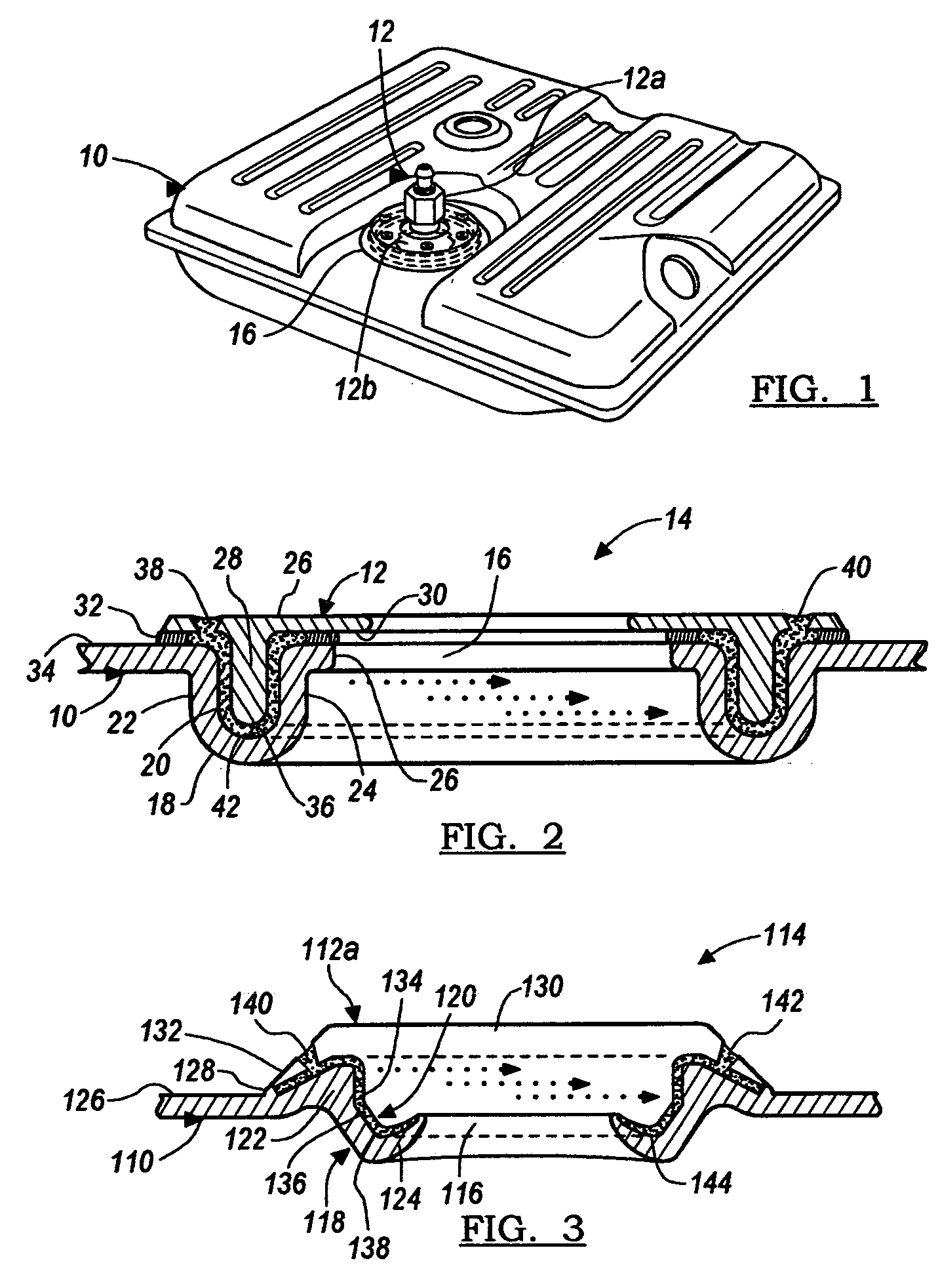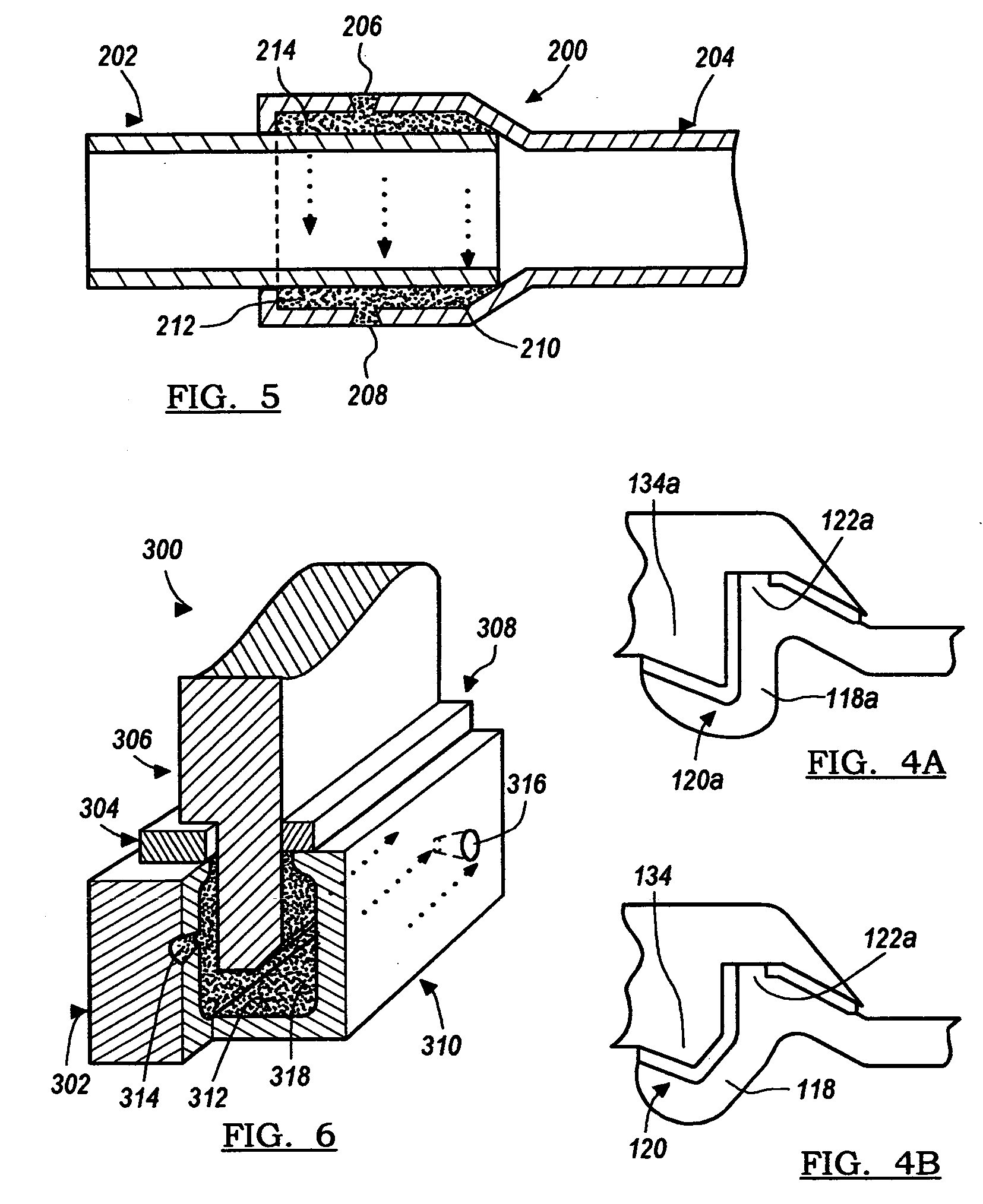Injectable structural adhesive
a structural adhesive and injection technology, applied in the direction of mechanical equipment, transportation and packaging, functional valve types, etc., can solve the problems of inability to provide enhanced structural support to the bonded rollover valve/fuel tank assembly, the peripheral bond may be susceptible to breaches or failures, and the hot plate welding is generally unsuitable for welding, etc., to achieve the effect of strengthening the structural suppor
- Summary
- Abstract
- Description
- Claims
- Application Information
AI Technical Summary
Benefits of technology
Problems solved by technology
Method used
Image
Examples
example i
[0057] The flow of the adhesive was tested by mocking up a joint design using transparent plastic cups. The cups were placed one in the other with the outer cup having two apertures drilled at opposite ends. A two-part acrylic adhesive was injected in one aperture until it started coming out of the aperture on the other side. The adhesive had a Brookfield viscosity of 20,000 cps, as measured at 20 rpm with spindle number 7. A two-part pneumatic gun was used to dispense the adhesive at a pressure of 30 psi. There were two joints mocked up, one with a thickness of 0.7 mm and one with a thickness of 2 mm. The adhesive completely filled the cavity both times without any detectable air gaps.
[0058] In order to determine the strength of the resulting bonds between the components, the following test was performed, as described in Example II, below:
example ii
[0059] Three sample HDPE joints were mocked up with 7 mm thick HDPE, similar to the joints shown in FIG. 3. A two-part acrylic adhesive with a Brookfield viscosity of 50,000 cps was injected in one aperture, using a 2-part pneumatic gun at 40 psi, until it came out of the other aperture. The adhesive used was of the Low Energy Surface Adhesive (LESA) type and was obtained from Dow Chemical (Midland, Mich.) under the designations Lot Nos. 200302273-14-1 and 200302273--4-2. The adhesive was allowed to cure for 24 hours, and then, using an Instron machine, the upper part of the joint was pushed while the lower was constrained. In all three samples the HDPE failed in substrate failure mode. The force of failure for each sample was as follows: 2891 N, 3011 N, and 3176 N, respectively. After the joints failed, they were cut into four pieces to see how uniformly the respective cavities were filled. In all cases, there were no visible voids in the respective bond lines.
PUM
| Property | Measurement | Unit |
|---|---|---|
| angle | aaaaa | aaaaa |
| angle | aaaaa | aaaaa |
| pressure | aaaaa | aaaaa |
Abstract
Description
Claims
Application Information
 Login to View More
Login to View More - R&D
- Intellectual Property
- Life Sciences
- Materials
- Tech Scout
- Unparalleled Data Quality
- Higher Quality Content
- 60% Fewer Hallucinations
Browse by: Latest US Patents, China's latest patents, Technical Efficacy Thesaurus, Application Domain, Technology Topic, Popular Technical Reports.
© 2025 PatSnap. All rights reserved.Legal|Privacy policy|Modern Slavery Act Transparency Statement|Sitemap|About US| Contact US: help@patsnap.com



